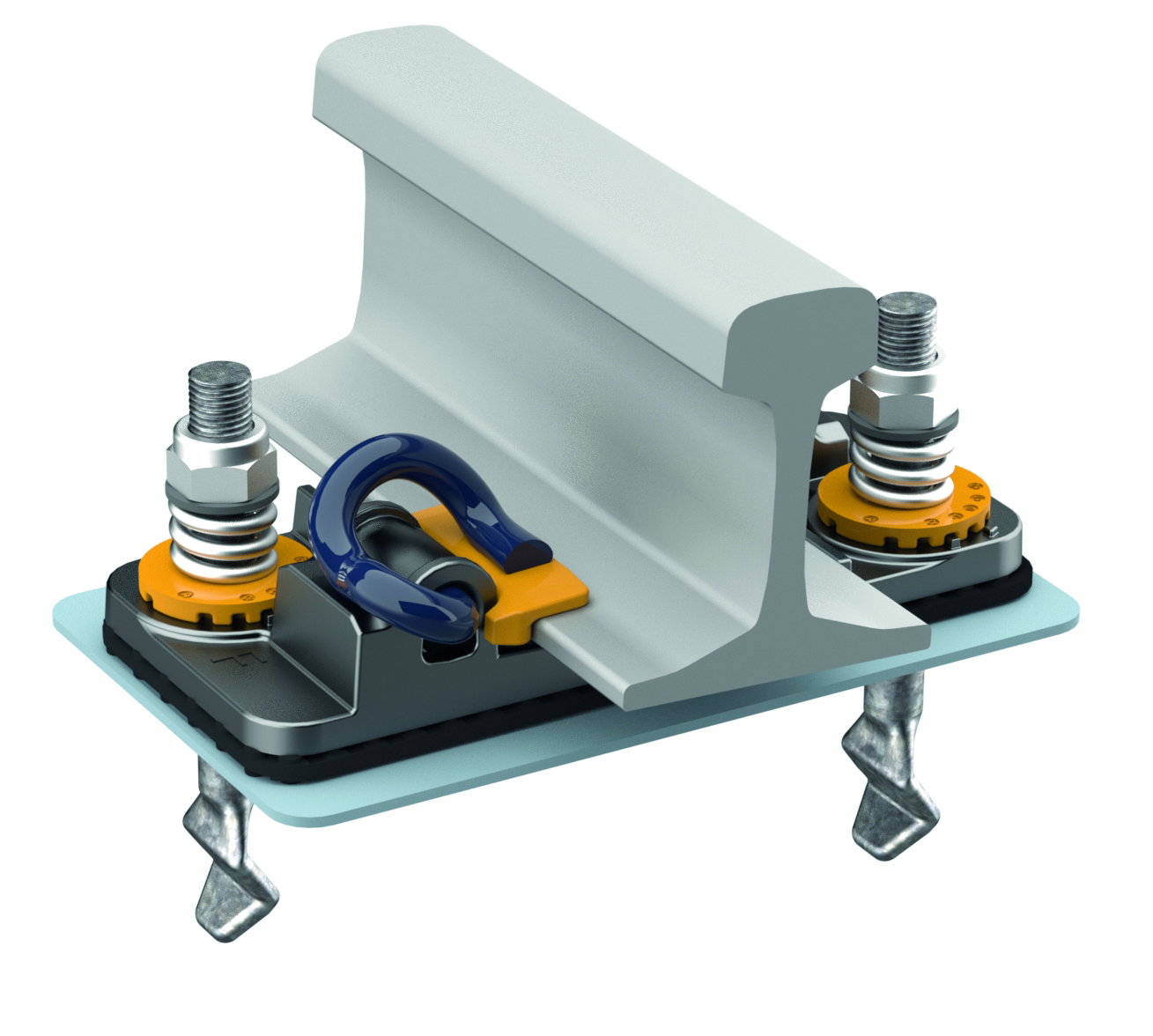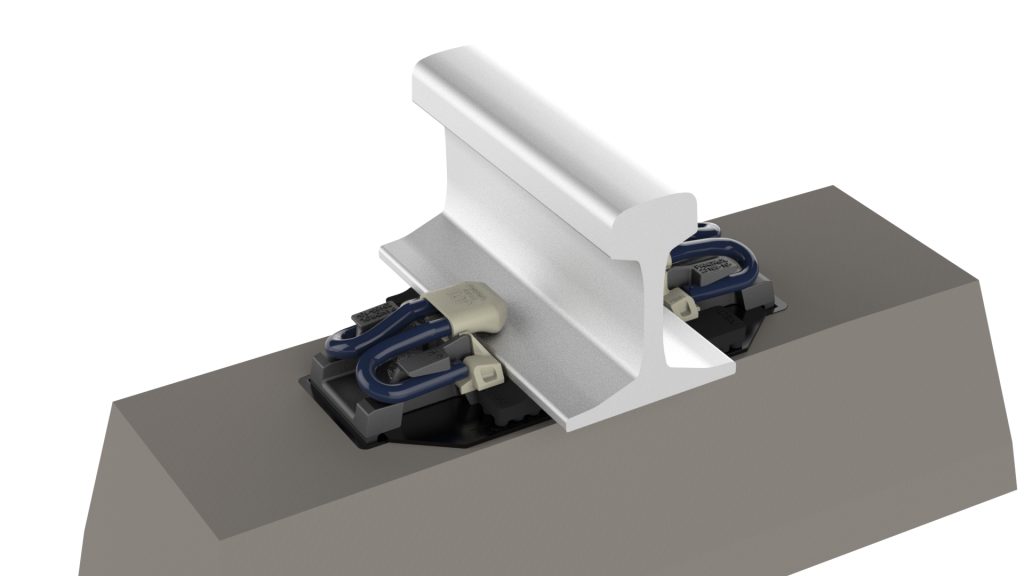DRS Baseplate product overview
Originally introduced in the 1980s, today’s evolution of the DRS baseplate is the trusted solution for metro, light rail and mainline slab tracks worldwide.
- Widely used on bridges, viaducts and in tunnels, it is suitable for all rail inclinations and rail types.
- The DRS baseplate is mounted on a studded, natural rubber pad that can be tuned for different axle loads and stiffness requirements.
- With a threadless fastening system and parts that can be replaced in situ, the baseplate requires minimal maintenance.
- Formerly known as VIPA DRS.
Downloads
Advantages of using Pandrol DRS Baseplate
Versatile
The DRS baseplate is adjustable, can be installed in different ways and is available in a range of configurations, making it a versatile option for all non-ballasted tracks and rail types.
New or Renew
Its versatility also means that it is the ideal solution for new-build tracks, renews and retrofit applications.
Less Vibration
The resilience provided by the baseplate’s rubber pad mitigates the effects of ground-borne vibration and secondary noise.
Insulated
High levels of electrical insulation increase the product’s efficiency and cost-effectiveness.
Compact
The compact footprint provided by the 2-hole baseplate reduces the size of pre-cast concrete elements required.
Technical features of the Pandrol Fastclip
Variable baseplate options
The DRS system is available with different baseplate configurations: a 2-hole offset footprint and a 4-hole inline.
Compact footprint
The 2-hole DRS baseplate provides a very compact footprint.
Electrical insulation
The baseplate system provides an exceptionally high level of electrical insulation, with the rail insulated from the baseplate and the baseplate insulated from the concrete slab.
Adjustability
The DRS baseplate achieves typical lateral adjustment of +/-5mm, with additional adjustability possible to meet specific requirements. Typical vertical adjustment of up to 12mm can be achieved with shims.
Track structure interaction
Rail fastening clips for the DRS baseplate are available in low toe load and a zero longitudinal restraint (ZLR) configuration to deal with the effects of track structure interaction.
DRS Baseplate - 2 Hole

DRS Baseplate - 4 Hole

Related products

As its name suggests, the assembly fits on a common interface and is fully interchangeable with a range of fastenings, including FCA and DFC.
Vanguard Common Interface

As its name suggests, the fastening assembly fits on a common interface and is fully interchangeable with a range of fastenings, including FCA and Vanguard.
DFC Common Interface

The product can be pre-assembled and delivered to site captive on the pre-cast element, providing substantial cost savings.
FCA Common Interface

The modern heavy haul railway is a demanding environment, with high locomotive horsepower, dynamic braking, large rail sections and high mega gross tonnes per year.
Victor Baseplate

Pandrol’s Fastclip FE RR rail fastening system is designed specifically for extreme heavy haul applications. It is suitable for an axle load of up to 40 tonnes and curve radius down to 150 metres.
Fastclip FE RR

SICUT composite ties and bearers deliver superior performance, enhanced value, and significant environmental benefits compared to wood, concrete, and steel alternatives.
SICUT Composite Ties

Fastclip

SKL

This non-bonded, low-profile system is fully insulated and provides excellent stray current protection.
e-Clip SRS

NABLA Evolution is a direct rail fastening system that offers enhanced performance for tracks with tight radius curves. It has been proven in installations for several decades and is recognised for its simple installation and maintenance. By maintaining the track gauge, it significantly increases the life expectancy of assembly components.
NABLA Evolution

PR Clip

The system is optimised for slab track and is suitable for tramway and metro applications.
